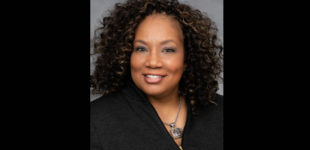Sunburn affects all skin types

By Danalla Dearmon
For The Chronicle
It’s summer time. We don’t think about putting sunscreen on, but we should. Almost everyone has been sunburned or will become sunburned at some point. Sunburn is a serious issue for all skin colors.
Sunburn, also known as erythema, is caused by a lot of exposure from the sun or sun lamps and tanning beds. People with dark skin think they are fine in the sun, but that’s not actually true, according to Dr. Maritza Perez, from the Skin Cancer Foundation. Perez, a director of cosmetic dermatology at St. Luke’s Roosevelt Medical Center and associate professor of clinical dermatology at Columbia University, said, “Everyone can get skin cancer and most skin cancers are associated with ultraviolet (UV) radiation from the sun and tanning beds.”
Sunburn on darker skin is harder to identify, since it’s harder to determine if the skin turns red, which is one of the first signs of sunburn, but it still has that tightness pain and the skin is hot to touch and blisters up. The darker one’s skin is, the more melanin is present. Melanin is the pigment that gives skin its color, which is why African-Americans have a lower chance of getting skin cancer. But when they do, they are more likely to die from it. It just takes longer to get sunburn because melanin needs more time to heat up.
According to www.today.com, “Melanin is the most common form of skin cancer, but it is the deadliest.” The number of people dying from skin cancer cases due to tanning are higher than the number of people dying from lung cancer cases due to smoking, according to www.skincancer.org.
Researchers say African-Americans with darker skin color have a higher rate of dying from skin cancer than Caucasian people do, according to a report by Gigen Mammoser on the website healthline.com.
Dr. Amy McMichael, professor and chairwoman of dermatology at Wake Forest Baptist Medical Center, said via email that the biggest problem people face with sunburn is that it can cause skin cancer later in life. She said all people regardless of their race and skin color can still get sunburn, and there is a less risk of skin cancer for people with darker skin, since they have more protection from the pigment in the skin. However, it isn’t enough to fully protect them from the entire sun.
The sunscreen she recommends to use is one that has an SPF of 30 and higher, which blocks both Ultraviolet A (UVA) and Ultraviolet B (UVB) rays. Make sure the sunscreen isn’t expired or over 3 years old. Sunscreen must be applied 30 minutes before going out in the sun and re-apply it every few hours. McMichael said the symptoms of sunburn can occur three to five hours after exposure. The symptoms can include pain, redness and skin that feels warm or hot to touch. You can get a headache and a fever, nausea, pain, tenderness and itching. Also you may experience small fluid-filled blisters, which may pop, and fatigue if the sunburn is severe.
If you happen to get sunburn
McMichael said, “You should stay out of the sun until the redness and pain subsides.”
There isn’t a cure for sunburn just yet, but you can try to take a cold shower or put ice on wherever your pain is occurring. You could also take pain relievers like ibuprofen or sunburn cream/gel. That may help minimize the pain, but it won’t completely stop it. Once you get a sunburn, it increases your chance of getting another sunburn and skin cancer. Whenever your skin is burned or tanned by the UV rays from the sun, it’s a sign of damage.
A comment from RHGma describing her worst sunburn experience on https://www.emedicinehealth.com/sunburn/article_em.htm said: “ I recently sunburned the top of both feet to a point of second degree burns with blisters the size of lemons! It was very painful. It was excruciating to walk or have my feet down (where the circulation would cause more pain). I should have gone to the hospital right away, but I waited a week. Reviewing the situation doctors told me that I was probably in shock and needed medical attention sooner than I sought it. It took just about 4 weeks before I could wear shoes!”
Sunburn is one of the most preventable causes of skin cancer.
McMichael said, “The best way to treat sunburn is to prevent it in the first place.”
She said it does not have to be a sunny day for you to still get a tan and sunburn. You can get sunburn on a cloudy day, because the sun is still present. According to the Skin Cancer Foundation, 80 percent of rays can travel through the clouds. You can still get sunburn even if you are in the shade, in the car or at even at home through your window. So just remember the best way to prevent sunburn is to not get it in the first place.
Danalla Dearmon is a rising junior at John F. Kennedy High School in Winston-Salem who is interested in a health career. She was a Winston-Salem Urban League intern working at The Chronicle this summer.
Tips of ways to prevent sunburn are shown below.
*Don’t forget to put sunscreen on.
*Avoid staying out in the sun for long periods of time.
*Wear sunglasses to protect your eyes.
*Always apply sunscreen 30-minutes before going outside.
*Don’t use an expired sunscreen.
*Use a sunscreen with a broad spectrum that protects from UVA and UVB rays.
*Do a quick check to see if you have any sunburn symptoms.
*Wear protective clothes, such as dark clothing and tight weave to block sun, and choose specialized clothing with a rating of ultraviolet protection factor (UPF) 30 or higher, when possible.
*Avoid tanning beds and tanning outdoors.
*Wear a wide-brimmed hat.











